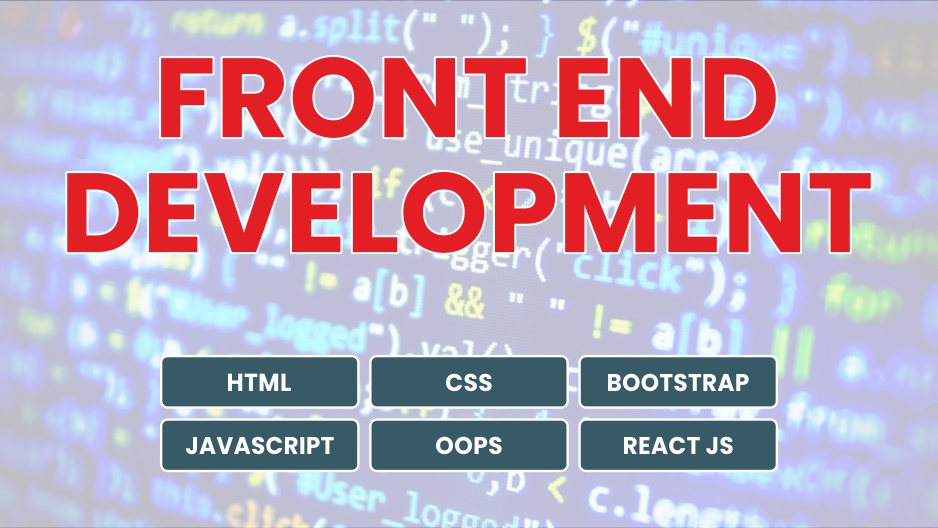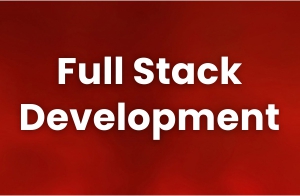About Front End Developing Course
Frontend design involves creating the HTML, CSS, and presentational JavaScript code that makes up a user interface. A frontend designer (who may also go by UI developer, client-side developer, UI engineer, design engineer, frontend architect, designer/developer, prototyper, unicorn, or Bo Jackson) lives in a purgatory between worlds.
Included In This Course
- 100% Job
- Rich Learning Content
- Taught by Experienced Prof.
- Industry Oriented Projects
Course Modules
- Create a Website Structure Using HTML, HTML5
- Formatting Web Layouts Using CSS3
- Build Responsive Web Design Using Media Query Using Framework Like Bootstrap
- Add Some Cool Effects Using JavaScript & jQuery
- Converting PSD to HTML
- Adding Animation, Scrolling Effects, and Many More Effects Using JS & JQuery
- Optimizing Website Using SEO Rules
- Launching Our Website
- Learning About Domain, Hosting, and Maintain Live Website Using Server Panel
- JavaScript
- JavaScript Importance
- ECMAScript & Versions & Install Environment Scratch JS
- Show different Types of Output Methods (alert, console, document, inner HTML)
- Syntax and Operations Of JS
- Conditions & Looping
- Different types of Variable Like (var, const, let)
- Array and String With Different Methods
- Functions (Function Types, Return Types)
- Working with Objects ( Prototype, Methods )
- Use Different Types of Objects LIKE (Date, Math, Boolean, and Number)
- Understanding Class and Objects, constructor, Prototype, Inheritance)
- Working with JavaScript DOM (Document Object Module)
- Understanding ES6 Concept
- Arrows
- Classes
- Iterators + for..of
- Modules & Module Loaders
- Proxies, Symbols, Promises, then, next
- Understanding JSON (JavaScript Object Notation)
- Working with JSON ( JSON.parse, JSON.stringify, JSON object, JSON array)
- Storing Local Data in Javascript with JSON local storage
- Angular Importance and Installing NPM
- Understanding Directory Structures
- Understanding Data Binding and ng Serve commands
- Working with MVC (Model, View, Controller)
- Scope and filtering (custom filter)
- Working with tables and select
- Working with (HTTP) Request and Response
- Working with DOM & ng events
- Understanding Form and Validations
- Understanding SQL with Angular
- Working with Routings & Services
- Setup Custom Template
- Working with API and Request
- Understanding Class and Objects, constructor, Prototype, Inheritance
- Working with JavaScript DOM ( Document Object Module )
- Introduction And Environment of ReactJs
- Version Control(GIT)
- ES6 Concept
- Fundamentals Of React
- React Bootstrap
- React Events and Local Storage
- Form Handling
- Routing & Navigation
- Promises
- Basic and Advanced Hooks
- Working with Radux
- Firebase(Authentication, Firestore, Storage, Hosting)
Web Front end Coding
Web Design
LANGUAGES TO LEARN:
HTML5, CSS3, SASS, LESS, Media Query, Tailwind CSS, Bootstrap, jQuery (Atch.), SEO, FTP, Hosting
Web Front End Development & Angular Js & React Js
Web Front-End Development
Angular Js
React Js
LANGUAGES TO LEARN:
Java Script
Framework:
React Js or Angular
Course Features
- Duration 12 Month
- Quizzes 12
- Duration 2 Hours
- Skill level Beginner
-
Language
Gujarati,Hindi
English - Assessments Yes
-
Who can join Front End Developing Course?
- 12 pass or diploma or engineering novice students.
- A person interested in learning about logical things
- Web Designer who wants to learn to program.
- Individuals who want to become software developers.
- A person who wants to pursue higher studies in IT or go abroad for a job.
-
Why should I learn Front End Developing?
- Convenient field.
- Many scopes in India and even out of the country
- Increasing scopes day by day
- An ample opportunity to become an Independent
- Most of the work is done by using websites and the internet.
-
What is the advantage of being a Front End Developing?
- You can master all the techniques involved in a development project.
- You can make a prototype very rapidly.
- You can provide help to all the team members.
- You can reduce the cost of the project.
- You can reduce the time used for team communication.
- You can switch between front and back-end development based on requirements.
- You can better understand all aspects of new and upcoming technologies.







